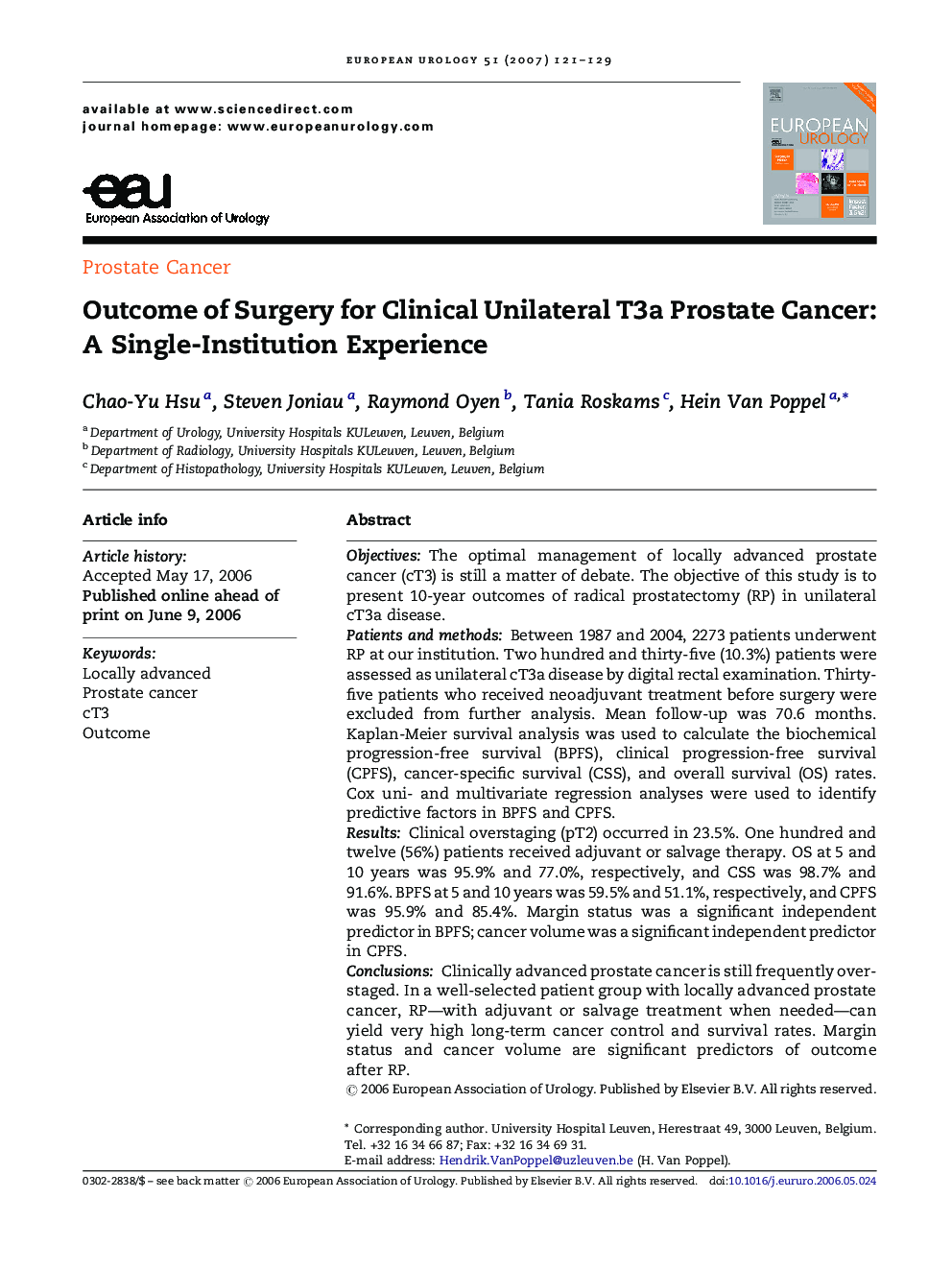| Article ID | Journal | Published Year | Pages | File Type |
|---|---|---|---|---|
| 3923424 | European Urology | 2007 | 9 Pages |
ObjectivesThe optimal management of locally advanced prostate cancer (cT3) is still a matter of debate. The objective of this study is to present 10-year outcomes of radical prostatectomy (RP) in unilateral cT3a disease.Patients and methodsBetween 1987 and 2004, 2273 patients underwent RP at our institution. Two hundred and thirty-five (10.3%) patients were assessed as unilateral cT3a disease by digital rectal examination. Thirty-five patients who received neoadjuvant treatment before surgery were excluded from further analysis. Mean follow-up was 70.6 months. Kaplan-Meier survival analysis was used to calculate the biochemical progression-free survival (BPFS), clinical progression-free survival (CPFS), cancer-specific survival (CSS), and overall survival (OS) rates. Cox uni- and multivariate regression analyses were used to identify predictive factors in BPFS and CPFS.ResultsClinical overstaging (pT2) occurred in 23.5%. One hundred and twelve (56%) patients received adjuvant or salvage therapy. OS at 5 and 10 years was 95.9% and 77.0%, respectively, and CSS was 98.7% and 91.6%. BPFS at 5 and 10 years was 59.5% and 51.1%, respectively, and CPFS was 95.9% and 85.4%. Margin status was a significant independent predictor in BPFS; cancer volume was a significant independent predictor in CPFS.ConclusionsClinically advanced prostate cancer is still frequently overstaged. In a well-selected patient group with locally advanced prostate cancer, RP—with adjuvant or salvage treatment when needed—can yield very high long-term cancer control and survival rates. Margin status and cancer volume are significant predictors of outcome after RP.
